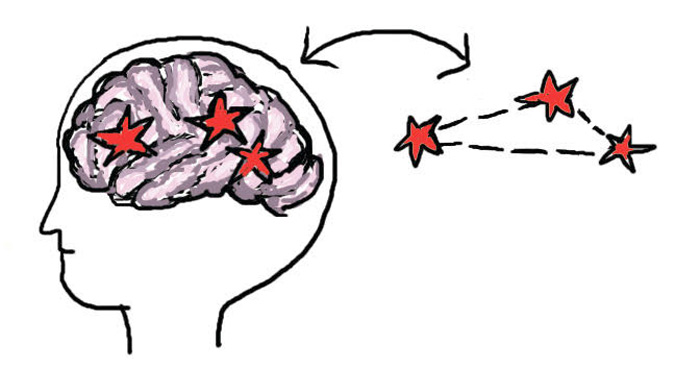How Bumpybooks Works
bumpybooks was created by two educator/moms that understand that keeping it simple is often the key ingredient to getting the job done! Our goal in creating bumpybooks was to simplify the complicated, and often frustrating job of helping a child learn to read. The sturdy pages throughout contain tactile/bumpy letters for student tracing and engagement while tips and techniques on every page makes it easy for the instructor to get the information they need when they need it.
With bumpybooks students learn:
- the alphabet
- upper and lower case correlation
- vowel identification
- SOUND SYMBOL ASSOCIATION*
- correct handwriting
- HOW TO BLEND SOUNDS INTO WORDS*
*SOUND SYMBOL ASSOCIATION and BLENDING OF SOUNDS IS THE BASIS FOR LEARNING TO READ

For many students learning to read can be a challenge. Reading has to be learned and according to research; spoken language is instinctive while reading is not! The good news however, is that our brains are designed so that we can learn to read.
Educators and specialists in the field of reading understand the complexities of teaching a student that struggles, how to read. Educators often become overwhelmed with complex manuals and complicated programs. Our patented bumpybooks was designed with you in mind. Tips and techniques are easy to understand and implement and are available throughout the book. Students want to use the book because they love the tactile bumps and colorful illustrations
bumpybooks is an easy-to-use tactile manual that gives explicit instructions on how to build the network necessary for reading for developing and struggling students, including those with dyslexia. It was co-created by Orton-Gillingham Fellow and founder of Literacy for Life Ann Edwards and artist/educator Karen Goldberg, to give educators and parents alike, the tools they need to help a student learn to read and write.
bumpybooks follows the same multi-sensory techniques and operations used by educators trained in Orton-Gillingham. The Orton-Gillingham approach is the basis of every remedial program on the market today. Students begin by learning sound/symbol associations. They trace the tactile letters, feel the bumps and say the letter and the sound simultaneously. With review and repetition, students automatically begin to connect the letter with its sound. In addition, students learn how to correctly write the letters. Mastery of a letter and it’s corresponding sound is the foundation upon which students learn to blend sounds into words. Many programs on the market today use individual elements of Orton-Gillingham. bumpybooks is the Orton-Gillingham approach. bumpybooks is multi-sensory and tactile and can be personalized for the differing needs of learners. It is diagnostic and prescriptive and includes the direct teaching of systematic phonics. Many reading programs have elements of Orton-Gillingham, bumpybooks incorporates all the elements of the Orton-Gillingham approach.
Orton-Gillingham (OG) is an an approach (not a program) to teach language. This approach uses multi-sensory techniques presented in a cumulative, sequential manner and teaches the structural base of the English language. The approach is flexible and designed to meet the needs of individual students. The Orton-Gillingham approach arose from the collaborative work of neuropsychiatrist, Dr. Samuel Orton and teacher/psychologist, Anna Gillingham.
Dyslexia is not a "reading problem" but rather a specific difficulty in dealing with language. The Orton-Gillingham approach helps struggling and beginner readers by creating the network needed for phonological processing.
Research has identified that after a year of multi-sensory, structured teaching, the brain begins to process print text and information. Images of the brain using MRI technology show activity in the "language center" of the brain. In other words the "Learning Triangle" is engaged and the language area of the brain is activated. The Orton-Gillingham approach strengthens the neural network (learning triangle) of beginning readers and builds the network for struggling readers.
Signs of dyslexia:
- high intelligence, low performance
- inability to rhyme at an early age
- failure of phonological awareness
- inability to manipulate sound
- difficulty with sequencing/order of operations, letters or words
- delayed speech

The Learning Triangle